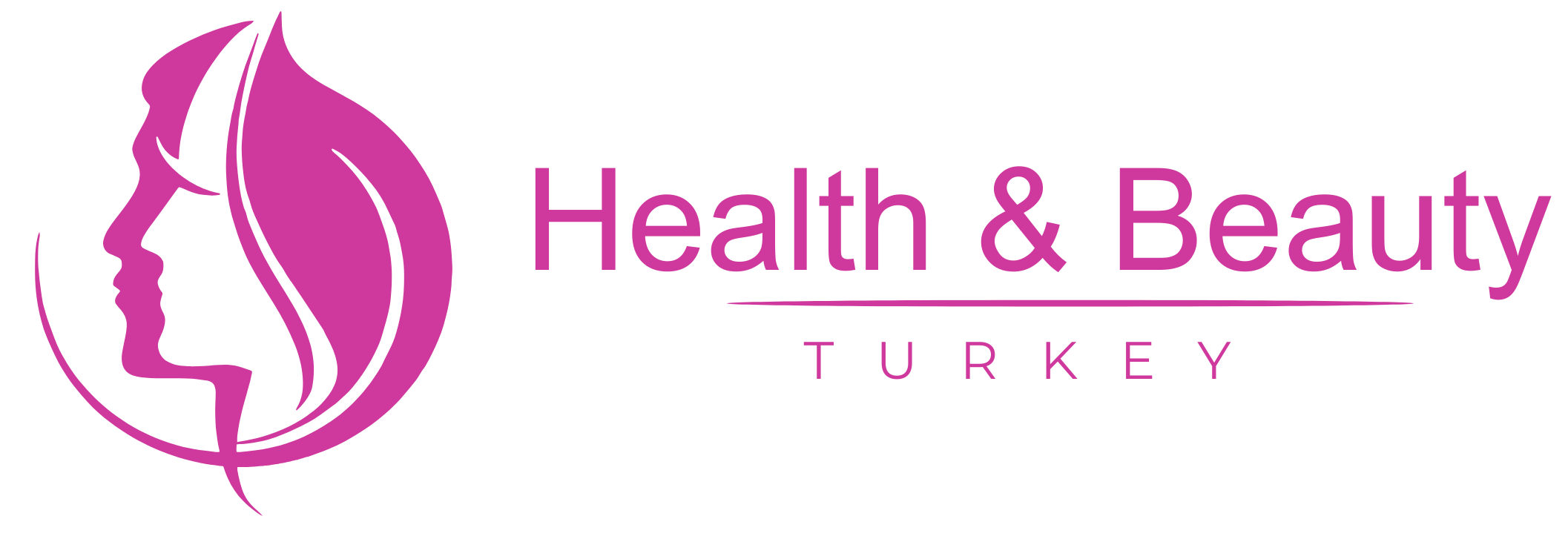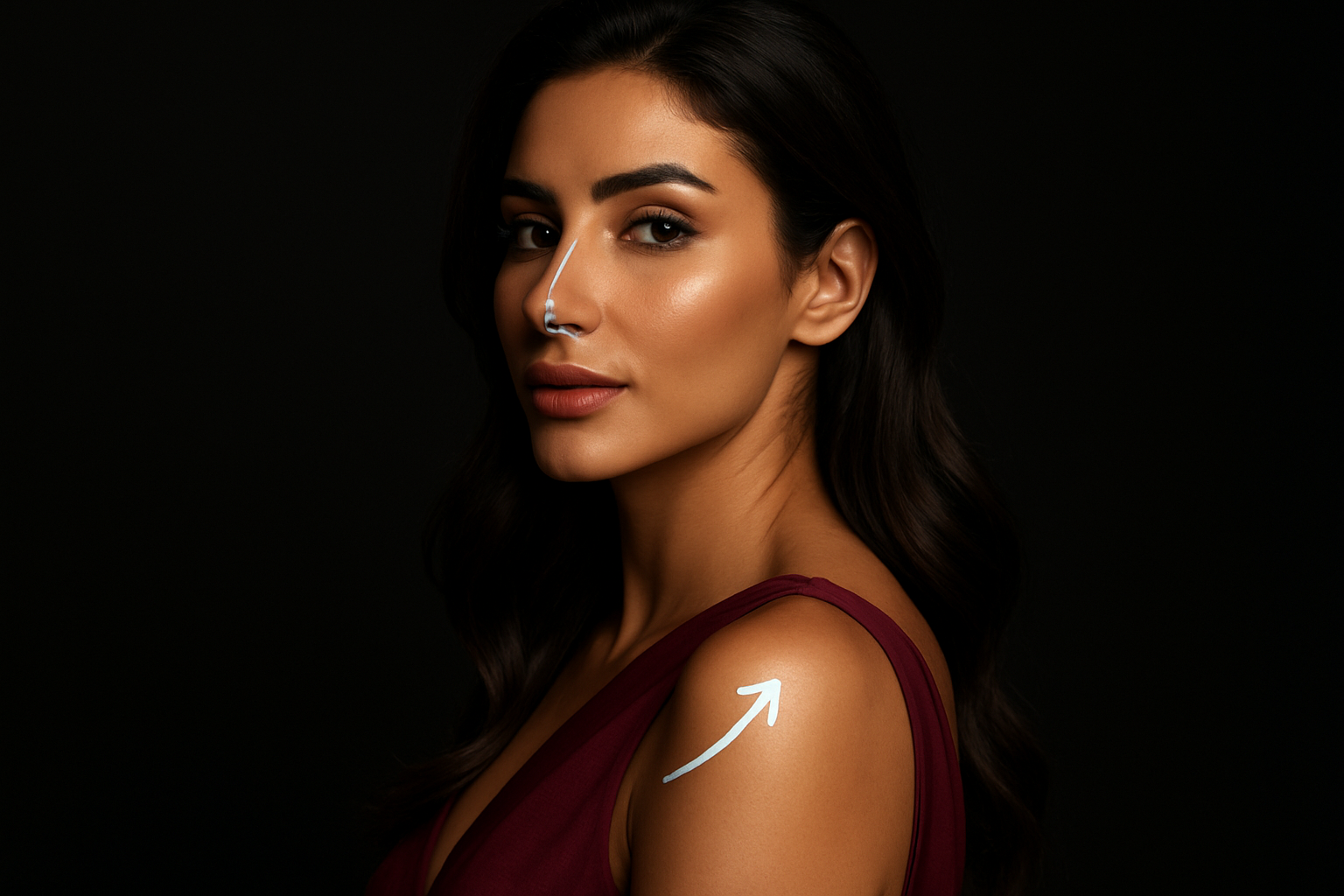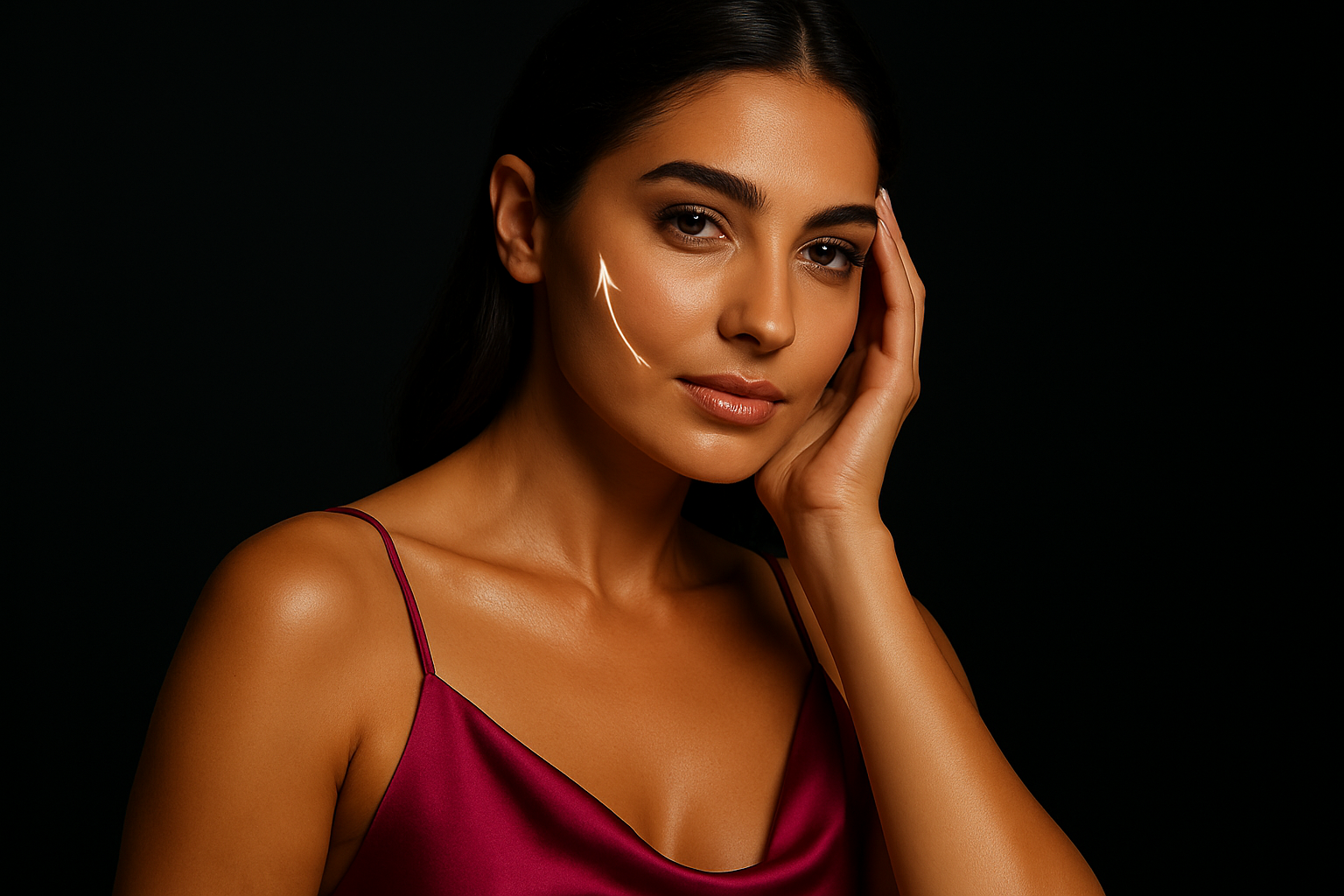Introduction
Rhinoplasty, commonly known as nose surgery, is one of the most popular cosmetic procedures worldwide, aimed at improving the nose’s appearance and function. However, not all initial surgeries yield the desired results, prompting some individuals to seek solutions for errors or dissatisfaction. Turkey has emerged as a leading global destination for nasal surgery, particularly for revision rhinoplasty. At “Health & Beauty Turkey,” we fully understand the challenges and concerns you may face when considering a second nose surgery. We are committed to providing the highest level of care, supported by our renowned surgeons, state-of-the-art technology, and unparalleled safety guarantees.
Medical Background
Why Do Patients Seek Revision Rhinoplasty?
The reasons for seeking revision surgery are often multifaceted and include:
- Unsatisfactory Aesthetic Results: The final shape of the nose may not align with the patient’s expectations or with balanced aesthetic standards in relation to other facial features. This can include asymmetry, an unnatural appearance, or the persistence of unaddressed deformities.
- Functional Problems: Sometimes, the initial rhinoplasty can affect breathing function, causing obstruction or difficulty. These cases require precise intervention to restore normal airflow.
- Unexpected Complications: Although rare, complications such as infections, healing problems, or adverse tissue reactions may necessitate corrective surgery.
- Changes Over Time: Nasal features can change gradually over time or due to subsequent injury, requiring adjustments to improve appearance.
- Surgeon’s Experience: In some instances, the surgeon who performed the initial surgery may not have possessed sufficient expertise or utilized appropriate techniques for the patient’s complex case.
Common Patient Concerns
At “Health & Beauty Turkey,” we recognize that the idea of undergoing a second surgery can be daunting. These concerns are entirely natural and include:
- Fear of Unsatisfactory Results: Patients may fear disappointment if the new surgeon does not achieve the desired outcomes.
- Health Concerns: A second surgery might carry slightly higher risks compared to the first, particularly regarding recovery and scar tissue formation.
- Cost and Time: Traveling and undergoing another surgery require additional financial and time investment.
- Dealing with New Doctors: There can be uncertainty when engaging with a new medical team.
To alleviate these concerns, we emphasize our absolute commitment to transparency, our use of the latest technologies, the involvement of top rhinoplasty surgeons, and our provision of medical tourism insurance for complication compensation.
Understanding Revision Rhinoplasty
Revision rhinoplasty, or secondary rhinoplasty, refers to surgery performed to correct or enhance the results of a previous cosmetic nose surgery. It is a more complex procedure than the primary surgery, requiring extreme precision and a deep understanding of nasal anatomy and tissues that may have been affected by the initial surgery.
Reasons for Revision Rhinoplasty:
-
Structural Deformities:
- Deviated Septum: If the nasal septum was not fully corrected in the first surgery, the deviation may persist, causing breathing problems and an asymmetric appearance.
- Nasal Bridge Collapse: The nasal structure, particularly the bridge, may collapse, requiring reconstruction with cartilage or bone grafts.
- Droopy Nasal Tip: If the nasal tip remains droopy or is not sufficiently elevated, revision surgery can correct this issue.
- Undesired Humps or Depressions: Small humps may remain on the nasal bridge, or undesirable changes may occur in the tip’s shape.
-
Aesthetic Issues:
- Nostril Asymmetry: Nostrils may be unequal in size or shape.
- Boxy Tip: A wide or undefined nasal tip.
- Pinched Tip: Excessive narrowing of the nasal tip.
- Unnatural Appearance: The nose may look artificial or not blend harmoniously with the rest of the face.
-
Functional Problems:
- Breathing Difficulty: Narrowed nasal passages or changes in the septal structure can obstruct breathing.
- Persistent Dryness or Bleeding: May indicate an internal nasal structural issue.
Risk Factors Requiring Revision Rhinoplasty:
- Complex Primary Surgery: Especially if it involved significant modifications to the nasal bone or cartilage structure.
- Internal or External Scarring: Scar tissue can affect the nose’s shape and healing capacity.
- Previous Nasal Injuries: May make the tissues more fragile and difficult to work with.
- Certain Medical Conditions: Such as autoimmune diseases affecting tissues.
Diagnosing the Need for Revision Rhinoplasty:
Diagnosis begins with a comprehensive evaluation by a specialized surgeon, including:
- Detailed Medical History: Inquiries about the previous surgery, its purpose, expected outcomes, and any subsequent problems.
- Thorough Physical Examination: External assessment of the nose’s shape, symmetry, and facial balance. Includes an internal examination to evaluate the septum, nasal passages, and mucous membrane condition.
- Photographic Imaging: High-resolution photos of the nose from various angles. Simulation software is often used to visualize expected results.
- Radiological Imaging (Optional): In some cases, a CT scan may be requested for a more precise assessment of the internal bone and cartilage structure, especially if there are concerns about sinuses or the septum.
Latest Research Updates in Revision Rhinoplasty:
The field of revision rhinoplasty is continuously evolving. Recent research focuses on:
- 3D Simulation Techniques: Aiding in precise surgical planning and providing more realistic patient expectations.
- Artificial Intelligence (AI): Used in image analysis and predicting surgical outcomes.
- Development of Improved or Synthetic Grafts: Offering better structural support and reducing the need for grafts from other body parts.
- Preservation Rhinoplasty Techniques: Aiming to reshape the nose with minimal tissue removal, reducing the risk of collapse or future deformities.
- Focus on Both Function and Aesthetics: Integrating appearance improvement with breathing function.
Candidates for the Procedure
Who Are the Ideal Candidates for Revision Rhinoplasty?
Ideal candidates are generally individuals who:
- Are dissatisfied with the results of a previous rhinoplasty and have realistic expectations.
- Experience functional breathing problems resulting from the prior surgery.
- Are in good general health without chronic conditions that could impede healing.
- Have sufficient tissue (like cartilage) for structural reconstruction if needed.
- Have waited sufficient time after the first surgery: It’s advisable to wait at least one year for tissues to stabilize and heal fully before considering revision surgery.
Who May Not Be a Good Candidate?
- Individuals with unrealistic expectations: Surgery cannot achieve absolute perfection.
- Those with deep psychological issues related to body image, who may require psychological counseling first.
- Patients with active medical conditions such as untreated infections or blood clotting disorders.
- Individuals unable to adhere to post-operative instructions.
Preparing for the Procedure
Preparing for Revision Rhinoplasty in Turkey
At “Health & Beauty Turkey,” we prioritize the preparation phase to ensure the best possible outcomes and a smooth treatment journey.
Before Traveling to Turkey:
- Remote Initial Consultation: We begin with a preliminary online assessment. You’ll submit clear photos of your nose and a detailed explanation of your concerns and expectations. Our medical team will provide an initial assessment of your candidacy.
- Appointment Booking: Once candidacy is confirmed, we assist you in booking an appointment with a suitable surgeon on your preferred date.
- Medical Preparation:
- Necessary Medical Examinations: We will provide a list of required pre-travel examinations, which you can undergo in your home country or upon arrival in Turkey. These typically include blood tests, a cardiac exam, and any other tests deemed necessary by the surgeon.
- Medication Review: Inform us about all current medications, especially blood thinners (like aspirin) and supplements, as you may need to discontinue them before surgery.
- Smoking Cessation: If you smoke, we strongly advise quitting several weeks before surgery, as smoking negatively impacts healing and wound recovery.
Upon Arrival in Turkey:
- Airport Transfer: You will be met at the airport and transferred to your comfortable hotel.
- Comprehensive Medical Examination: Upon arrival, you will undergo a thorough medical check-up and a detailed consultation with your surgeon. This will include:
- Precise Nasal Examination: A detailed assessment of the current shape, breathing function, and tissue condition.
- Detailed Discussion of Expectations: The surgeon will explain achievable outcomes and limitations, possibly with illustrative diagrams.
- Finalizing the Surgical Plan: A precise surgical plan will be established based on the assessment.
- Answering All Your Questions: We believe clear communication builds trust, so we allocate ample time to address all your queries.
- Logistical Arrangements: All arrangements for your accommodation, surgery schedule, and follow-up appointments will be managed.
Revision Rhinoplasty Procedure Steps
Revision rhinoplasty is a procedure that demands exceptional precision. It can be divided into several stages:
Pre-Operation: Preparation and Anesthesia
- Anesthesia: Revision rhinoplasty is typically performed under general anesthesia to ensure patient comfort and safety throughout the procedure. In very rare, minor cases, local anesthesia with sedation might be used.
- Marking Incision Lines: The surgeon will make precise markings on the nose to guide the surgical process.
During the Procedure: Surgical Methods and Advanced Techniques
Revision rhinoplasty techniques often differ from primary surgery in that they frequently require the use of grafts to reinforce the nasal structure, which may have been weakened by the previous surgery.
-
Obtaining Grafts:
- Septal Cartilage: If the nasal septum is still intact, cartilage can be harvested from it.
- Ear Cartilage (Auricular Cartilage): Thin, flexible cartilage is harvested from the ear.
- Rib Cartilage: For complex cases requiring significant cartilage or strong structural support, rib cartilage may be used. This procedure is done with great care to minimize pain and scarring.
- Bone Grafts: In some cases, a small bone graft may be used to support the nasal bridge.
-
Surgical Approaches:
- Open Approach: Involves a small incision in the tissue separating the nostrils (Columella), allowing the surgeon clear visualization of the internal nasal structures. This approach is most common in revision surgeries due to the need for extreme precision.
- Closed Approach: All incisions are made inside the nostrils, leaving no visible external scars. This may be suitable for minor adjustments.
-
Reconstructing the Nasal Structure:
- Nasal Bridge Support: If the nasal bridge has lost height or collapsed, cartilage or bone grafts are used for reconstruction.
- Nasal Tip Sculpting: The nasal tip’s shape is refined using grafts to achieve better symmetry and balance with the rest of the face.
- Septum Correction: If the nasal septum remains deviated, it is adjusted to improve breathing and appearance.
- Improving Air Passages: Ensuring the nasal passages are open and not narrowed, allowing for unobstructed breathing.
- Final Sculpting: The surgeon adjusts the skin and soft tissues over the new framework for a natural, harmonious look.
Post-Operation: Recovery and Follow-up
- Splint and Dressings: An external splint is applied to protect and support the nose, along with internal splints to maintain the septum’s alignment.
- Immediate Monitoring: You will be under medical observation for a few hours to ensure stability before returning to your hotel.
- Pain Management: Pain relievers will be prescribed to manage any discomfort.
- Sleeping with Head Elevated: Sleeping on your back with your head propped up by extra pillows is recommended to minimize swelling.
- Avoiding Strenuous Activity: Refrain from intense physical exertion or vigorous sports for several weeks.
- Avoiding Nose Blowing or Vigorous Cleaning: This could lead to complications.
- Medical Follow-up: Follow-up appointments will be scheduled to remove dressings and splints and assess healing progress.
Recovery Period: Healing Phases
- First Week: The most critical period, focusing on wound healing and reducing swelling and bruising.
- Weeks 2-4: Most bruising subsides, and swelling significantly decreases. The splint and dressings are often removed during this time.
- Months 1-6: Swelling continues to gradually resolve, and initial results become more apparent.
- Year One and Beyond: Tissues continue to stabilize and refine, revealing the final, complete results of the nose. Adhering to the surgeon’s instructions during this period is crucial.
Innovative Treatment Options in Turkey
Turkey is distinguished by its adoption of the latest technologies in rhinoplasty, including revision surgeries.
- Precision Techniques: Our surgeons employ high-precision techniques for sculpting cartilage and bone grafts, ensuring perfect symmetry and a natural appearance.
- Focus on Internal Structures: Attention is given not only to external aesthetics but also to the internal nasal structure to ensure optimal breathing function.
- Use of Surgical Microscopes: In complex cases, microscopes may be used to enhance precision in delicate maneuvers.
- Comprehensive Care: We offer an integrated package including consultation, surgery, accommodation, and transportation, ensuring a comfortable and stress-free treatment experience.
Addressing Patient Concerns
At “Health & Beauty Turkey,” we recognize that the idea of undergoing a second surgery can be daunting. These concerns are entirely natural and include:
- Fear of Unsatisfactory Results: Patients may fear disappointment if the new surgeon does not achieve the desired outcomes.
- Health Concerns: A second surgery might carry slightly higher risks compared to the first, particularly regarding recovery and scar tissue formation.
- Cost and Time: Traveling and undergoing another surgery require additional financial and time investment.
- Dealing with New Doctors: There can be uncertainty when engaging with a new medical team.
To alleviate these concerns, we emphasize our absolute commitment to transparency, our use of the latest technologies, the involvement of top rhinoplasty surgeons, and our provision of medical tourism insurance for complication compensation.
Practical Advice for Patients
Practical Tips for Patients Traveling for Treatment in Turkey
- Psychological Preparation: Be prepared for a treatment journey that may include a recovery period. Maintain a positive outlook and focus on the desired results.
- Open Communication: Do not hesitate to ask any questions or express any concerns to our medical team or your representative at “Health & Beauty Turkey.”
- Adherence to Instructions: Strictly following the surgeon’s post-operative instructions is vital for the success of the surgery.
- Healthy Nutrition: Consume a healthy diet rich in vitamins and minerals to support the healing process.
- Adequate Rest: Get sufficient sleep to allow your body to recover.
- Tourism and Relaxation: Try to enjoy some gentle sightseeing during the recovery period (after consulting the surgeon). Turkey’s beautiful tourist spots can contribute positively to your mental well-being.
Why Choose “Health & Beauty Turkey”?
At “Health & Beauty Turkey,” we offer more than just medical services; we provide an integrated treatment experience that prioritizes your safety, comfort, and satisfaction.
- Medical Expertise and Competence: We select only highly qualified surgeons with extensive experience in their fields.
- Latest Technologies: We utilize cutting-edge technologies and equipment to ensure treatment accuracy and effectiveness.
- Comprehensive Care: From your arrival to your departure, we are with you to provide everything you need.
- Transparency and Trust: We provide clear information about procedures, costs, and potential risks, along with safety guarantees such as complication insurance.
- Supportive Environment: We offer the psychological and logistical support you need to make your treatment journey comfortable and successful.
Medical Tourism Insurance for Complication Compensation: An Added Guarantee for Your Peace of Mind
We fully understand that concerns about potential complications can be a barrier to seeking medical treatment abroad. Therefore, at “Health & Beauty Turkey,” we offer medical tourism insurance for complication compensation, providing you with extra protection and unparalleled peace of mind.
What Does the Insurance Cover?
- Inpatient Treatment Coverage: If you experience complications requiring hospitalization after surgery, this insurance covers the inpatient treatment costs.
- 6-Month Validity: The insurance takes effect from the date of surgery and lasts for six months, covering the main recovery period.
- Coverage for Travel and Accommodation for Re-operation: Should a revision surgery become essential due to a covered complication, the insurance contributes towards the necessary travel and accommodation costs for this procedure.
- Procedures at Accredited Clinics: The insurance covers only procedures performed in clinics and hospitals accredited by the Turkish Ministry of Health, ensuring you receive the highest standard of care.
This insurance is a testament to our high confidence in the quality and safety of our services and our commitment to providing a distinct, worry-free treatment experience for our patients.
Revision Rhinoplasty Cost in Turkey
The cost of revision rhinoplasty in Turkey varies based on several factors, primarily:
- Case Complexity: Does the surgery require minor adjustments or a comprehensive reconstruction of the nasal structure?
- Surgeon’s Experience: Highly experienced and internationally renowned surgeons may command higher fees.
- Technique Used: Certain techniques or materials (like grafts) can increase the cost.
- Hospital or Clinic Facilities: Prices differ between various medical facilities.
- Anesthesia and Materials Used.
Generally, revision rhinoplasty costs in Turkey can range between USD 3,500 and USD 7,000. However, for an accurate estimate tailored to your specific situation, a detailed consultation with your surgeon is always recommended. At “Health & Beauty Turkey,” we guarantee complete cost transparency with no hidden fees.
The decision to undergo revision nose surgery is a personal and significant one. At “Health & Beauty Turkey,” we strive to make this experience as positive and safe as possible. With the expertise of our renowned surgeons, our adoption of the latest technologies, and our commitment to your safety through medical tourism insurance for complication compensation, we assure you that you are in capable hands.
Don’t let past concerns prevent you from regaining the beauty of your nose and your self-confidence. Turkey, and the “Health & Beauty Turkey” center, await you to provide top-tier medical care, an enjoyable travel experience, and results that exceed your expectations.
Are you ready to take the next step towards the nose you’ve always dreamed of?
Contact our medical representative today for a free consultation and initial assessment of your condition. Our team will answer all your questions and guide you through every step of your treatment journey in Turkey.




